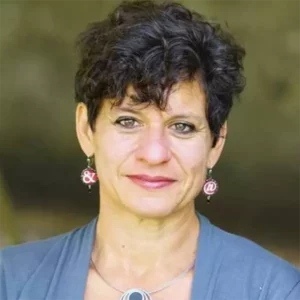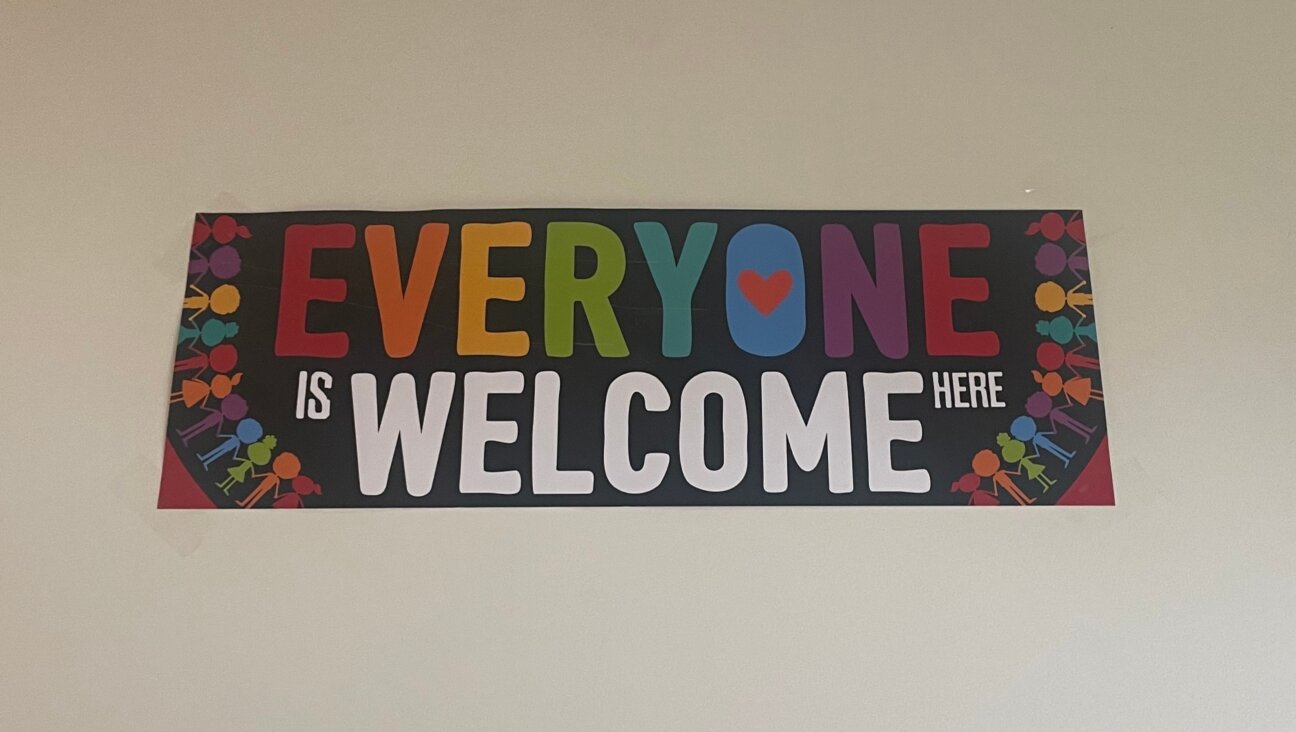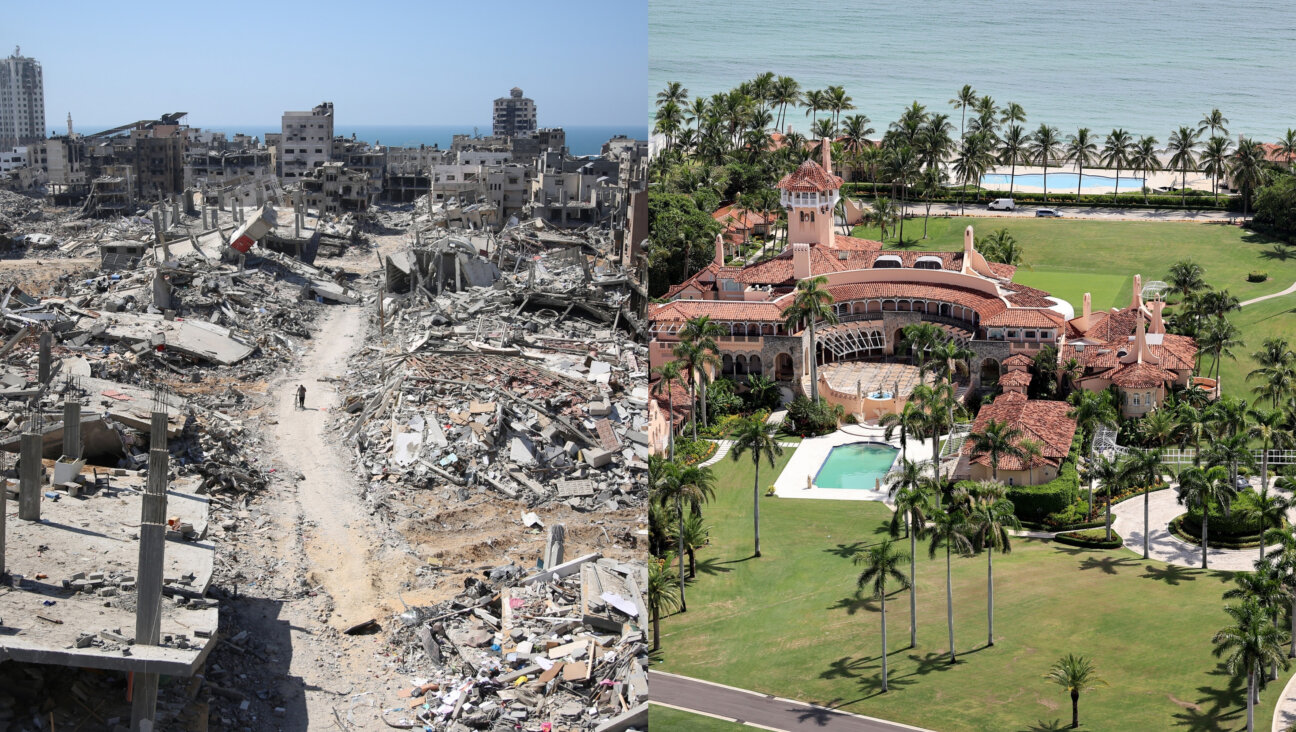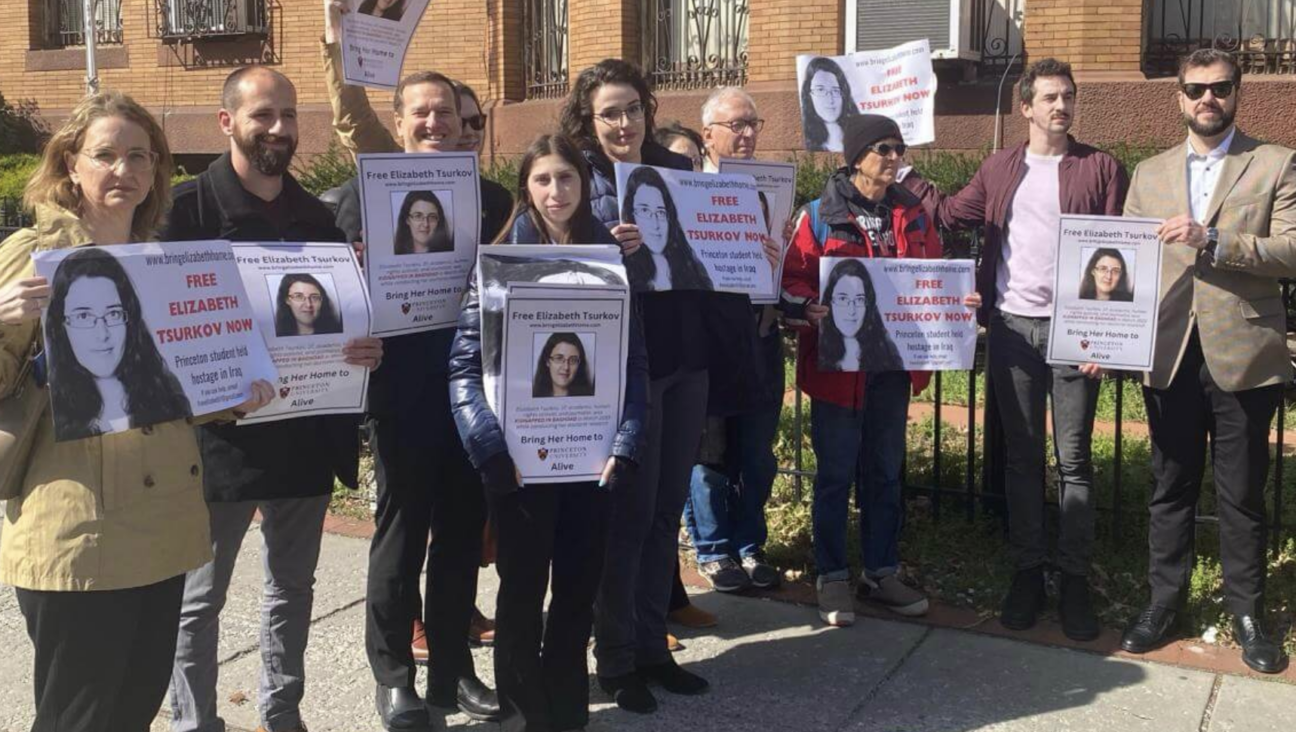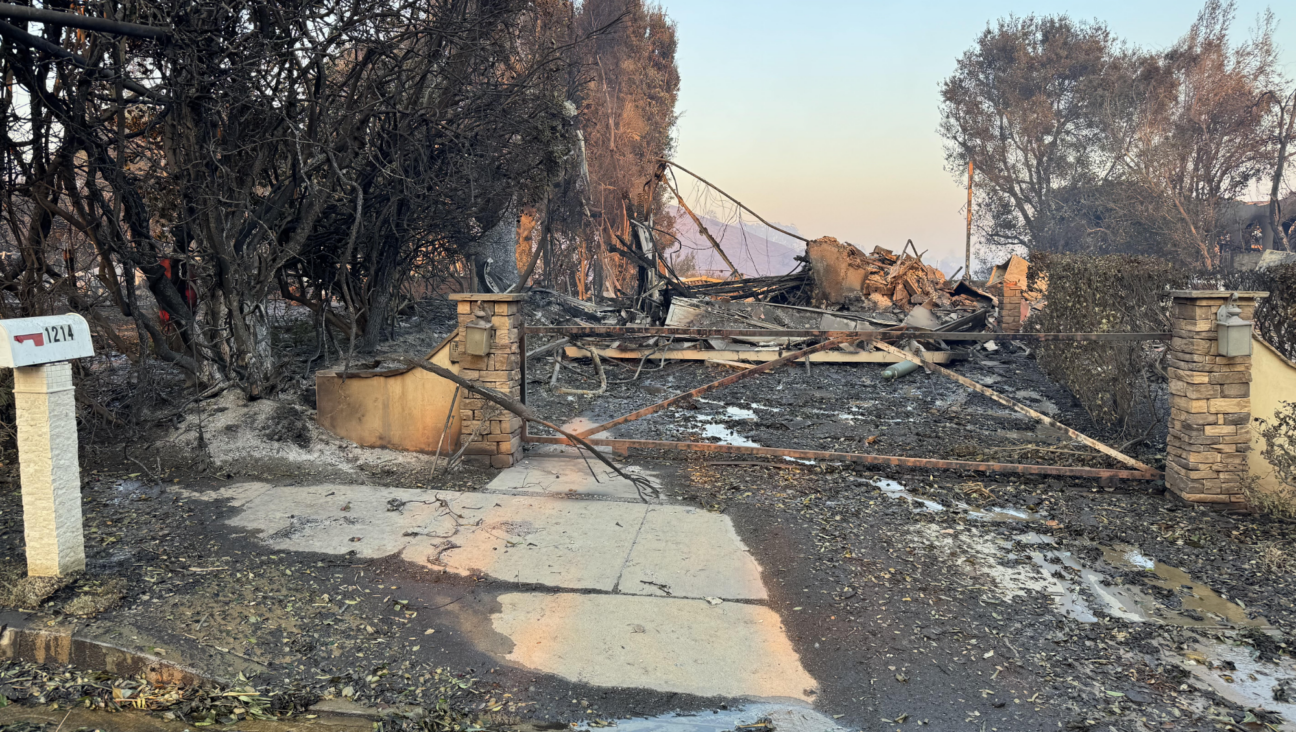‘There’s a terrorist in every house’: How one kibbutz’s frantic WhatsApp messages from Oct. 7 became a work of art
‘When I hear it in my head, I hear it in their voices,’ said Adi Drimer, whose artwork is going viral.

Courtesy of Re’im is My Home. Ink on paper. (Adi Drimer, Oct. 14, 2023)
This is our editor-in-chief’s weekly newsletter. Click here to get it delivered to your inbox on Friday afternoons.
The handwritten Hebrew words are mesmerizing even if you cannot decipher what they say. They march across the page, then down, then across, then up, then around again and again and again until there is no more space, no more words.
The artwork that Adi Drimer made a week after the horrific Oct. 7 terror attack on her beloved home in Israel’s south creates something of a vortex for the eye. After a second, I do not see words but letters, and then only the shapes that the ink marks and the spaces between them form on the page. I’m sucked into the center and then lost within it, overcome by it, as we have all been by the depravity and destruction of this unholy war.
When I first glimpsed Drimer’s drawing, I thought it might be a list of the more than 200 souls abducted by Hamas. When I heard she lived at Kibbutz Re’im, site of the all-night music festival where terrorists massacred some 260 revelers, I imagined it contained their names. In fact, it is the terrifying real-time tick-tock of how she experienced the attack, alone in her safe room: A transcript of the text messages of the kibbutz WhatsApp group for 100 minutes of that hellish morning.

“It’s like a diary that you see what really happened, you see the chaos,” Drimer, an elementary school teacher, told me via Zoom yesterday.
“I didn’t write the name of the writers, but I know them — everyone from my kibbutz knows who wrote what,” she added. “When I hear it in my head, I hear it in their voices.”
Urgent. I’ve got a gunshot wound — What does that mean? The kibbutz has been infiltrated? — Yes. Is the army here? — Where’s the army??? — Get the army to hightail it over here. How is it possible the army’s not here yet??
The messages begin at 8:20 a.m., an hour and 45 minutes after the first Red Alert sirens signaling rockets from Gaza sent Drimer and the other 450 residents of Kibbutz Re’im into their safe rooms. Drimer, who lives alone, said she does not know why there was no traffic in the WhatsApp group about the attack until 8:20. The last message before the barrage depicted in her artwork announced that the kibbutz library would be open that day.
Drimer, 53, grew up on Re’im, spent her 20s and 30s in Tel Aviv, and moved back to the kibbutz in 2011 to be close to her nephews, who are now teenagers. Her 80-year-old mother also lives in the community. “That’s my home,” Drimer said simply.
She does not consider herself an artist. Harsh words from a teacher made her stop drawing and painting around age 6, though she continued to spend a lot of time in the kibbutz craft room. In Tel Aviv, she took up ceramics, and has sold a few pieces to fellow kibbutz members.
Drimer made the drawing the Saturday after the attack, using a roller-ball pen and paper around 11 inches by 14 inches. It took less than an hour. The day before, she had attended a session with an art therapist at the hotel in Eilat that is housing evacuees from the kibbutz.
“I know it was supposed to get out of me,” she said of the piece, whose title, Re’im is My Home, is also the name of the WhatsApp group.
“I noticed afterward that I did some mistakes, but I didn’t fix it,” she said. “There were words that the people wrote with mistakes. I wrote exactly the letters, because that’s what they said.”
If somebody has seen Asaf Faber they should tell Noy … Right now I’m barricaded in a room with a wounded person who is hemorrhaging … There’s shooting at the transitional neighborhood in a row near the swimming pool. In the transitional neighborhood there’s heavy shooting. Is there an emergency squad here?
Be quiet. They’re outside our house, please come, please come — come please fasttttt, please come, somebody react, somebody? Somebody —
Your message is being read, amen for them to come — please Ilan somebody — Sonya stay locked in the safe room
Drimer said she was alone in her safe room with only the WhatsApp messages until about 6 p.m. The door does not close — “I never fixed it because, you know, it’s for bombs,” she said, not to defend against an infiltrating terrorist. So she huddled by a wall far from the door — but she also ducked in and out, she said, “to the toilet, to the fridge, to make coffee.”

“I don’t think I was afraid,” Drimer told me. “I probably was, but I have very good self-defense training. Maybe because I didn’t have someone else there to care about in the safe room; it’s only me. If I was with my mom all the time, I would have definitely been afraid for her.”
There’s no way to lock the safe room from inside, they’re trying to open our safe room — Lift the handle upwards — slam it hard — with the handle facing upwards and hold onto it tightly — There’s no — turn the handle upwards — It’s not locking — this way — Please come
It’s still possible to open it from outside — Stronger — Slam the door stronger and raise the handle upwards — For Gini only — I also can’t raise the handle upwards — Team Tsvi are you on the way?
Please I’m not breathing — If there’s a bed or table you can block the door push something against it — Just send somebody
Zilpa use force it locks — am afraid to make noise — Is somebody on the way here??
They’re inside our house — Please, team Tsvi — use all your strength and raise the handle —What difference does it make raising the handle, they’re here.
Five members of Kibbutz Re’im were killed, Drimer told me, five others kidnapped. Far more carnage occurred at the music festival in its fields. The neighboring kibbutz, Be’eri, was also decimated, with some 100 of its 1,100 residents murdered and another 100 abducted.
There’s a painting making the rounds on Instagram of an imagined highway marker for Kibbutz Nir Oz, just down the road, showing the population on Oct. 7 (450) and Oct. 8 (190).
Most Re’im residents evacuated the night of the attack or the following day, but Drimer stayed behind with the security team, to feed the pet cats people left behind. Many cats had run away in the chaos of the attack, including her own two, Mao and Smack. But many were still in their houses, and they were hungry.
On the third day, Drimer said, a terrorist emerged from the bushes on the kibbutz, and was shot dead. “After that, every civilian, we had to leave the kibbutz, that’s it,” she said. “When they told us we have to go, I made a list with all the cats and where they are, if they are in the front of the house or in the backyard, and sent to those who stayed, and they said they will take care of it.”
I hear noises on the porch somebody might already be inside the house, because they fired on the house — Team Tsvi where are you —
Terrorists are at the house of Roni and Sason — who’s here? — Miriam — They’re trying to get in — please get here already — they’re shooting outside get here — they’re doing something inside the house — where is anyone — somebody from the emergency squads run to Boaz Barzilay. Very Urgent.
My children are alone in Dvir’s house can somebody get to them?
there’s gunpowder inside the house we’re choking
You have to hold the handle tightly from the inside — Put shirts on your faces — lie on the floor Michal — Keep completely silent — Don’t turn anything on — Put wet t-shirts beneath the door, lie close to the floor — It might be that they’re in shooting at our safe room —
there’s a terrorist in every house, the entire neighborhood

Drimer posted the drawing to her Facebook page immediately after creating it. It’s been shared 598 times. Commenters called her a hero, said the messages reminded them of notes left by victims of the Holocaust, sent love from Switzerland. Someone Drimer does not know remade the artwork in embroidery.
“There is no air,” reads one post. “Evidence is hard to read,” says another. “I wish I could hug you.”
The first week after Drimer got to the hotel in Eilat “was the most difficult week ever,” she told me. “We went to funerals every day. Every day to a different one. I went to my friend, to be with her, because she lost her son. It was a very, very bad week. ”
Over the last few days, Drimer said, they have erected six large tents outside the hotel, where children are attending classes. She spent Thursday in the art tent, handing out supplies.
Drimer herself has not made any more art. I asked what she was going to do with the drawing, which was sitting on a desk in the hotel room. “I’m not going to frame it,” she said. “I don’t want it on my wall.”
She’ll probably sell it — and give some of the money to the kibbutz, to rebuild.
Drimer said she plans to stay in the hotel until at least Nov. 14 — and then to return to Re’im.
“This week I started to talk a little bit with people about the future, and I know that many of them say that if the Hamas is still in Gaza, they’re not going to come back to the kibbutz,” Drimer said. “I can understand them. But I need to.
“I like to be at home, I feel safe,” she continued. “It’s very weird to say that, but I feel it. I don’t know why but I feel that I need to be at home, and home is there.”
A message from our Publisher & CEO Rachel Fishman Feddersen

I hope you appreciated this article. Before you go, I’d like to ask you to please support the Forward’s award-winning, nonprofit journalism so that we can be prepared for whatever news 2025 brings.
At a time when other newsrooms are closing or cutting back, the Forward has removed its paywall and invested additional resources to report on the ground from Israel and around the U.S. on the impact of the war, rising antisemitism and polarized discourse.
Readers like you make it all possible. Support our work by becoming a Forward Member and connect with our journalism and your community.
— Rachel Fishman Feddersen, Publisher and CEO



